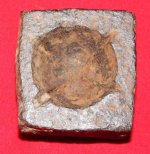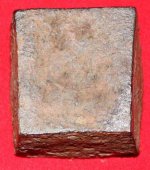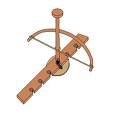johnnyi
Bronze Member
- Jul 4, 2009
- 1,887
- 144
- Detector(s) used
- minelab, white's xlt, deus xp, fisher aquanaut, white's twin box
- Primary Interest:
- Relic Hunting
I'm pretty sure I've already figured this one out, but it is so cool I had to share it with my fellow "what is it" fanatics who I know would appreciate it as much as I do.
I found it yesterday on a property on which once stood a mill in the late 1700's. It is very irregularly shaped and it is cast iron. At first I didn't see the score lines, as they were packed with rust, and I was thinking a mold of some kind. It finally dawned on me this is an ancient vertical shaft bearing (the scores helped lubricate) and the only need for a vertical bearing I can imagine at this location would have been for the old mill shaft that turned and supported the wheel. (If anyone has a new idea about this that would be great!)
Meanwhile, it's one of my favorite "primitive industrial iron" finds; the kind we too often pitch!
I found it yesterday on a property on which once stood a mill in the late 1700's. It is very irregularly shaped and it is cast iron. At first I didn't see the score lines, as they were packed with rust, and I was thinking a mold of some kind. It finally dawned on me this is an ancient vertical shaft bearing (the scores helped lubricate) and the only need for a vertical bearing I can imagine at this location would have been for the old mill shaft that turned and supported the wheel. (If anyone has a new idea about this that would be great!)
Meanwhile, it's one of my favorite "primitive industrial iron" finds; the kind we too often pitch!





 I see the mold would have had ridges instead in order to produce prescorn 'dum dum' muskets balls.
I see the mold would have had ridges instead in order to produce prescorn 'dum dum' muskets balls.

